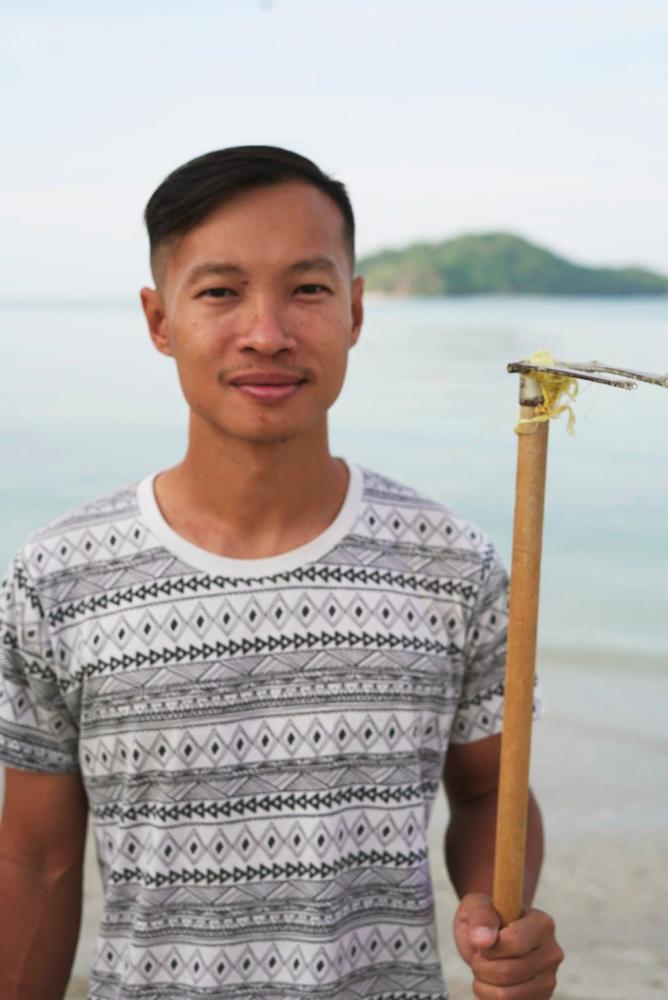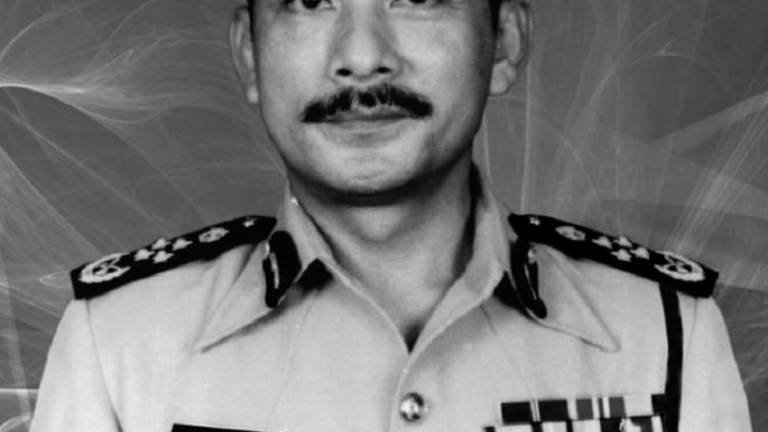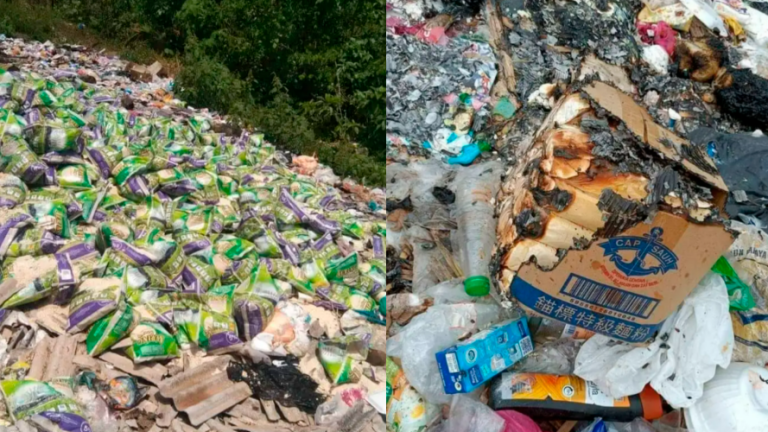PANG SERN YONG moved from Singapore to Kuala Lumpur in August 2020 to pursue his love for a particular type of art – drawing patterns in the sand.
Captivated by the white sandy beaches of Langkawi in Kedah, Pang moved to the island and began to draw large-scale artworks, ranging from geometric designs, mandalas, patterns and flowers in the sand.
“I am drawn to making art on the beach because of its quality of impermanence. When the tides change every six hours, the beach ‘canvas’ would be refreshed. I love the challenge of racing against time in two to three hours to get each piece created and documented,” he said.
Pang creates his masterpieces using non-polluting tools such as an iron rake with a wooden handle, and a length of nylon string used to make simple measurements.
“The size of the ‘beach canvas’ would depend on how much the tide recedes from the shore. A typical size would measure about 20m in length and 10m in width,” said Pang.
His biggest piece Oriental Fans was 30m by 10m, which he took three hours and three attempts to perfect.
A degree holder in film studies, Pang worked as a film and video creator for 10 years before falling in love with beach art. Despite having no formal education in art, the self-taught artist attended sketching and drawing classes and learned beach art solely through exploration and experimentation.
His earliest memories of the beach were those with his mother, whom he describes as his biggest inspiration, at Desaru and Pangkor Island, before moving at the age of five to Singapore, where he spent most of his life.
After moving back to Malaysia to expand his media company, his relationship with the beach grew stronger.
“I started with drawing circles on the sand using just small sticks. As days went by, my urge to create art became stronger, and with the beach available as a ‘canvas’, I started to acquire tools or art equipment and made bigger and more complex pieces, and used a drone to document the pieces.
“My works began to gain traction online, as well as from curious beach-goers,” he added.
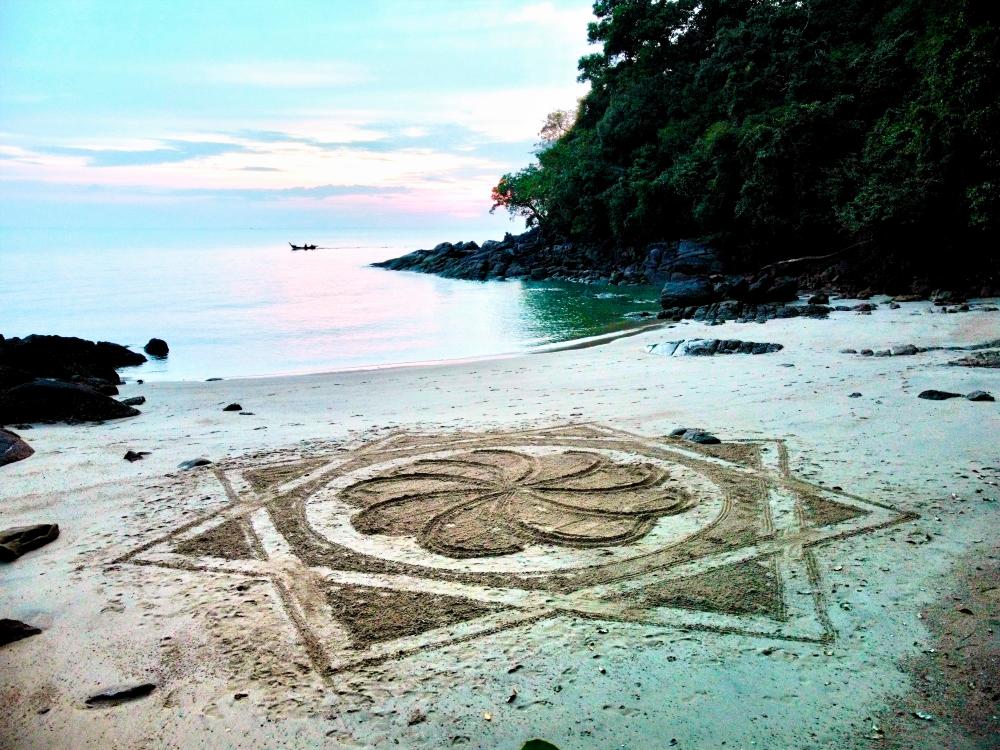
Why do you call yourself a beach artist and not a sand artist?
I call myself a beach artist because I feel that beach art isn’t just about sand, but the whole beach. The entire process from conceptualisation, creation and documentation would involve the sea, the trees, the sunlight and the surroundings. I see each of these elements being interconnected, and without any of these, it would not be possible for beach art to exist.
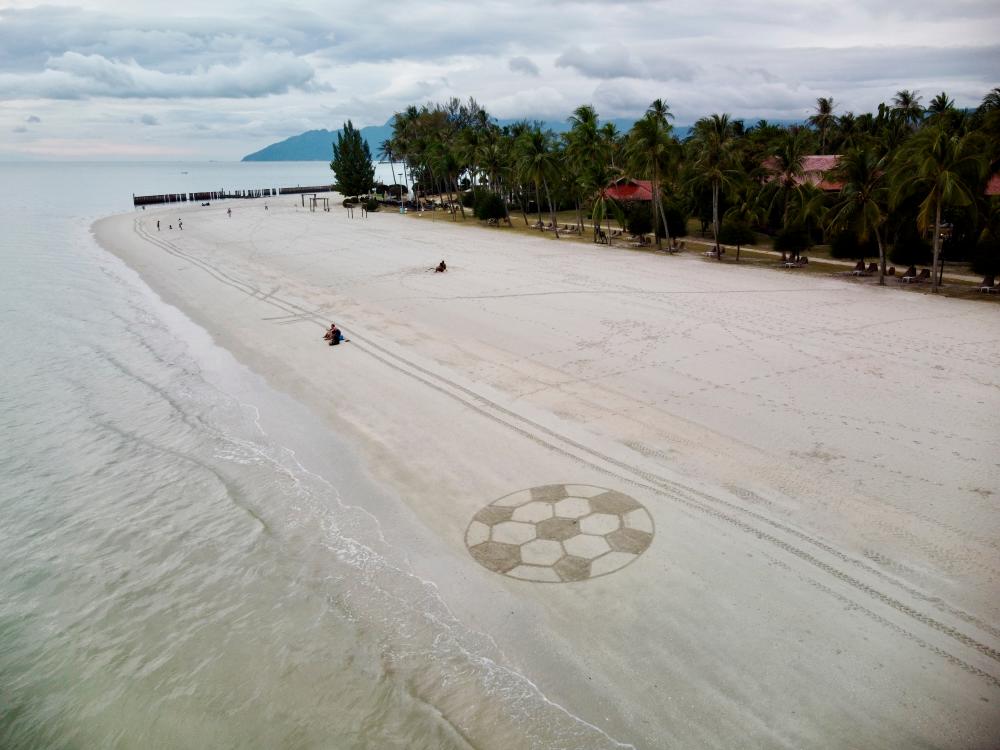
What kind of shapes and patterns do you draw?
Sand canvas is elegant, and the shapes and patterns that I create seek to reflect its elegance. Inspiration for my works comes from nature. I am always drawn to repeating patterns, and they inspire me to create geometric designs that I would like to be timeless in quality. The pieces that I create on the sand must blend with the surroundings. I also get ideas from my personal life and experiences and seek to raise conversations on social and environmental issues through the pieces.
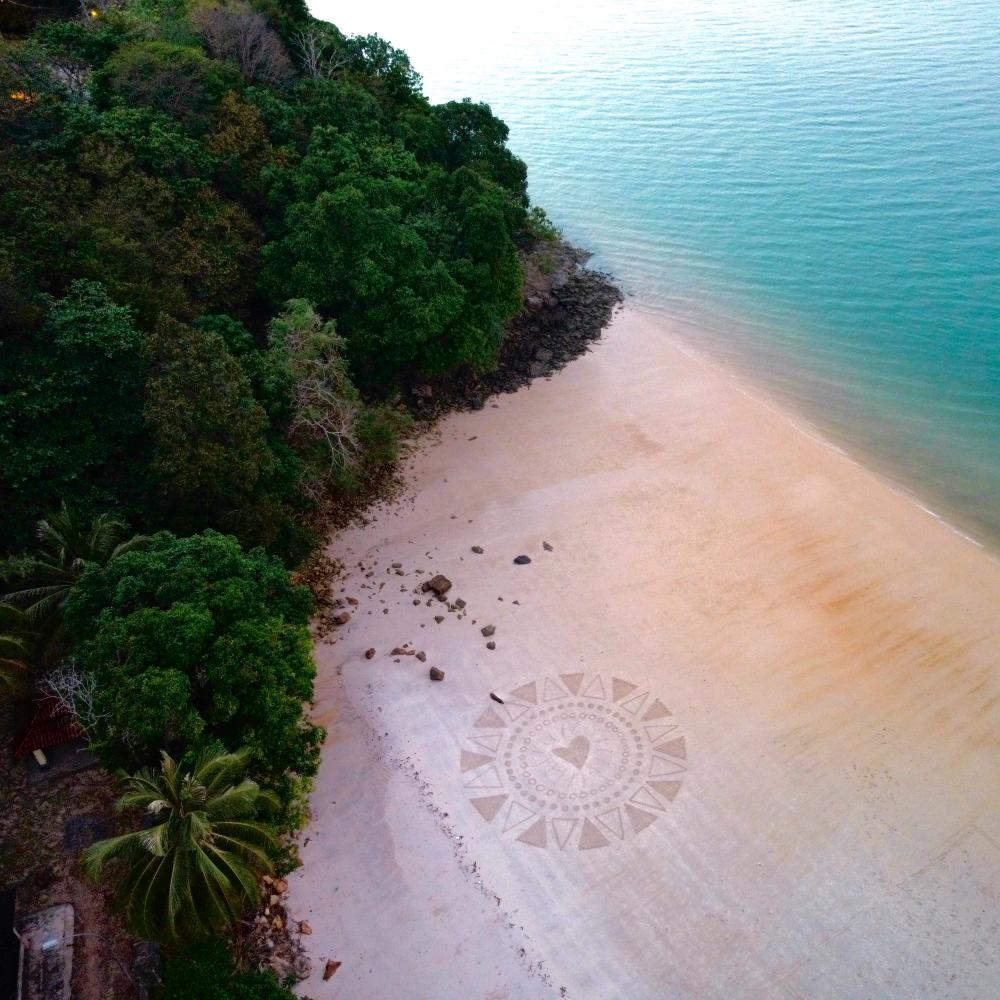
What is the focus of your art?
I wish to call attention to our beaches and for us to look at them with fresh eyes, aside from their use for commercial and leisure activities such as water sports and swimming. Because of the scale and size of the art pieces (they can only be captured from the air along with the surroundings), viewers are immediately drawn in and captivated.
Beach art is timely, urgent and relevant as over-tourism and pollution have forced the closure of beaches in Thailand and the Philippines for clean-up operations as recently as 2019. Before more beaches close due to these issues, I hope that my art will raise awareness and spark conversations on how we can better protect and care for our beaches.
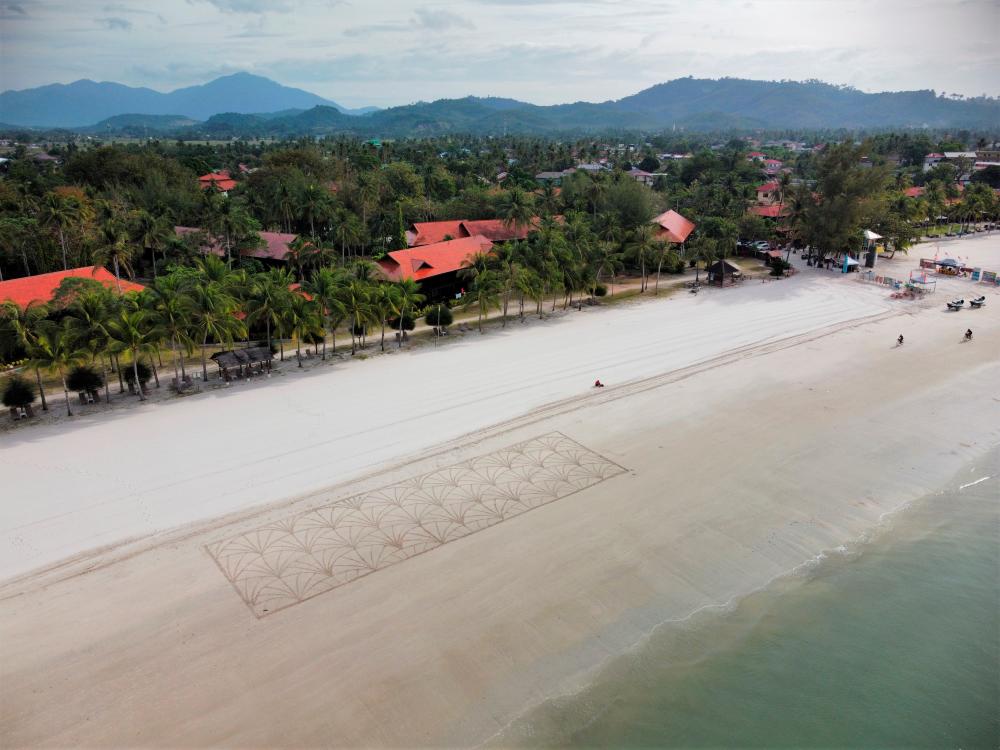
What factors do you need to consider before drawing?
Low tide, wet sand and no rain. I check the tide schedules daily to ensure low tide timings do not coincide with sunrise or sunset. Timing is also important, with only two to three hours to draw my designs from either 7am to 9am in the morning or 5pm to 7pm in the evening for the best light cast on the sand for documentation.
I also need to consider unwanted intrusions from passers-by unknowingly walking into an unfinished piece.
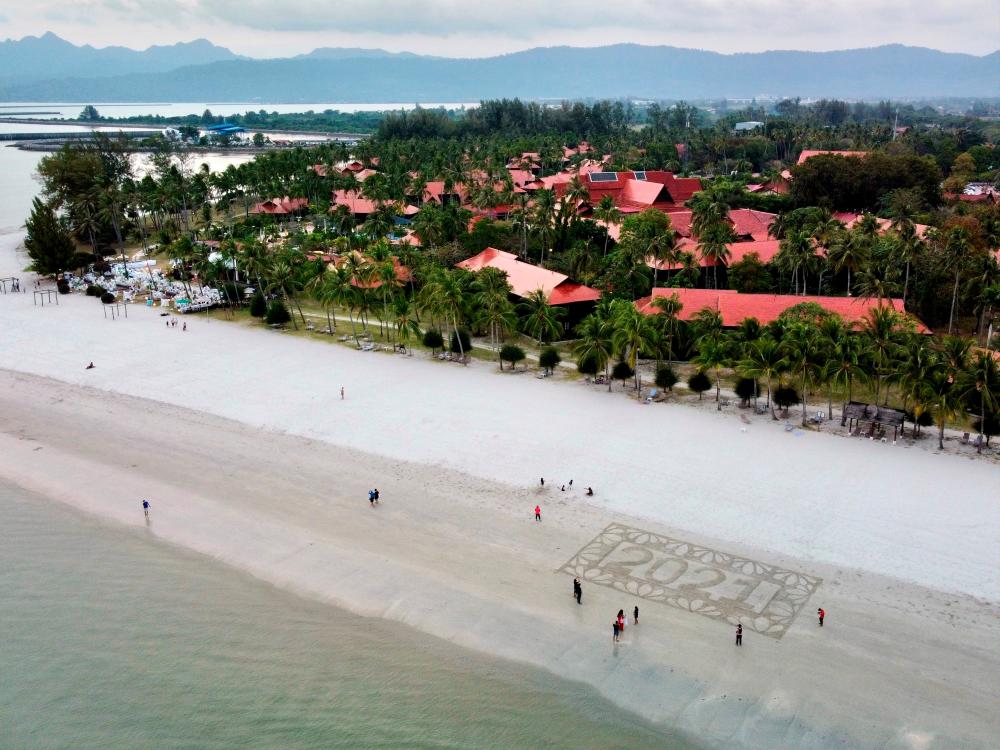
What are your future goals?
Call attention to conservation issues, promoting our beaches via beach art, and also to grow a beach art network and collective.



